Deer hunting is different all over the United States. A southern hunter might be fighting mosquitoes and heat stroke at the same time a northern hunter’s big concerns might be frostbite and hypothermia.
Here are some tips for that northern deer hunter.
by Robert A. Patterson
Editor’s note: I’ve known Bob Patterson since the early 70s. We’ve done a lot of hunting together. But now the re-hashes of our respective deer seasons sometimes sound like we’re talking about completely different activities. I hunt mostly southern swamps and Oregon high desert, and Bob hunts Northern Minnesota. This is the first in a series about deer hunting in cold climates.
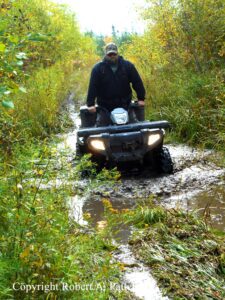
Deer hunters in Minnesota and Mississippi have the muddy roads in common.
When I was a State Fire Instructor in Iowa, my boss who always said, “There are a lot of ways to skin a cat. What’s important is that you get the cat skun”. To that end, the specifics of what I’ll relate in the following articles is what I have found to work for me, in what I do and where I do it, over the last half century of experimentation. Hopefully, I can pass on some principles to make your process a little easier.
Northern Minnesota is a land of extremes. Extreme cold, extreme hot and muggy, extreme wind, extreme bugs, and extreme beauty. Northern Minnesotans have a saying: “If you don’t like the weather wait ten seconds, and it will change”. Most often, those changes are not for the better. Our crew has hunted and camped in temps from 60 degrees to -15 degrees, and that doesn’t take wind chill into account. Wind, rain, hail, and snow were just added bonuses. Usual hunting temperatures are teens and twenties.
The Inuits have a saying: “You sweat, you die”. Keep those concepts in mind as we discuss deer hunting “up north”.
Weather, terrain, physical condition, and activity, will all have an impact on what you do, how you do it, how long you do it, and what gear you do it with. The proper clothes and equipment will make the difference between a comfortable, enjoyable, hunting trip and miserable experience. The older you get the more important comfort becomes!
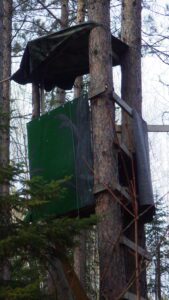
My stand.
The two major methods of hunting in Minnesota are elevated stand, and stalking. Let’s look at the considerations for stand hunting. I’d say about 90% of deer hunting is from a stand. In an elevated stand you are up above your game and your scent often gets carried over the animal and not detected…and sometimes not. But the biggest advantage is the ability to see, and shoot, down into the forest.
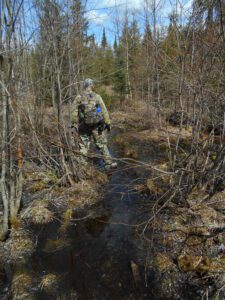
Hunting conditions vary greatly.
We hunt in an area that has a lot of diverse habitat – mature pine, second growth poplar, replanted pine, mature cedar swamp, deciduous, open swamp, and strip cut and clear-cut logged off areas. In deep forest, where I hunt the most, a long shot is 30 yards. A couple of years ago one of the crew and I were scouting through some really thick brush down by the river. A deer got up ten feet from us and ran off. The brush was so thick we never saw it.
Stand hunting is mostly affected by the weather, since your activity level is at about zero. If you are out exposed to the elements your comfort will be regulated by your clothes. If you’re in a box stand, or a ground blind, it may be regulated by your “Little Buddy” heater.
Our hunting party consists of five to six people. Everyone mostly sits in the open. A couple of years ago, one person used a ground blind. The ground blind eliminates one of the major considerations – wind. Insulation will handle a lot of cold, but when the air is moving, it sucks the heat out of you very quickly. It’s always good to have some extra layers to put on if you’re not comfortable. It’s also good to have a windproof layer on the outside of your insulation.
Until this year my stand was surrounded with camo material with die-cut holes in it. This last season I changed to solid carpet sides, which cuts down on some of the wind. The stand is still open, but the sides make a difference.
Layering is your only regulation if you’re just sitting there and are cold. The other regulation is ventilation. If the temperature warms up greatly during the day, you might find yourself being too warm. Venting or removing layers are your basic choices. I prefer venting as it takes a lot less movement to accomplish. The sides on my stand obscure a lot of movement, but changing coats seems to be a major production in a confined space. Often requiring standing up to get the job done. I know a seamstress who is now a whiz at installing pit zips.
I usually tie my heavy coat to my pack for walking into my stand. When I start out, I’m usually uncomfortably cool. When I get to my stand, I’m usually starting to sweat. I can cool down quickly by venting my under layers, then put on the rest of my insulation for sitting.
Clothing specifics will be addressed in another article, but I want to consider one layering concept here that most people miss or misuse. That is the “hat”. The head loses a disproportionate amount of heat compared to the rest of the body. Having spent twenty years on the ski patrol, I learned a lot about regulating body temperature and its relation to the insulation on the head. “If your feet are cold, put on a hat”. Think about that one. The opposite is true if you’re too hot.
Stalking is the second hunting method. Yeah, OK, there’s stalking and there’s still hunting, and blah, blah, blah. I’m not going to get into semantics. Other than sitting in a stand, you’re moving. When you’re moving you’re using energy, which creates heat. This is where all the other parameters mentioned at the beginning come into play – terrain, physical condition, activity. They all affect the amount of heat and the rate at which it is produced.
The consideration for the hunter is, what insulation is needed to balance heat production with heat loss so you remain comfortable? Physical condition will normally remain constant for your hunt, but may vary from one season to the next. When terrain and activity levels change the insulation must adjust accordingly. Goal one: be comfortable. Goal two: don’t sweat. Sweat enhances heat loss and can lead to hypothermia, especially when your activity level drops.
I have a tendency to be too warm, so I am a huge proponent of ventilation. But I would much rather be a little warm and ventilate than take off layers. Changing clothes while deer hunting, especially in a stand, is a pain in the butt. To that end, if I plan to change modes during the day from stand to stalking, I’ll wear clothes that are easily changed, like insulated pants with full side zips. I also carry three styles and weights of hats or caps in my vest.
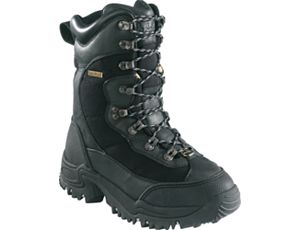
The Cabelas Inferno is a good choice for overall use in cold weather.
It seems the first thing to get cold for everyone is the toes. Don’t shop price tags when looking for boots. (Learn more about picking out hunting boots.) Good quality boots with the proper amount of insulation for your hunt are the most important piece of equipment you will ever buy. Boots are the one piece of equipment that will have the largest impact on your hunting experience. Boots are not easily changed and hence you’ll most likely wear the same boots all day regardless of weather or activity changes.
If it’s going to be really cold, I’ll wear a pair of pack boots. Pack boots are very warm, but a pain in the butt to stalk in, and maybe even too warm to stalk in. Regular insulated hunting or hiking boots will provide better ankle support and traction while walking, especially on uneven or hilly terrain.
Bottom line: you’re not going to figure out what works for you by sitting on your butt watching the Vikings play football. Get out, use your gear in different conditions, and at different activity levels. Make special note of weather, what you’re doing, and what you’re wearing when you start to sweat. From this you will develop a “feel” for what you should be wearing given the conditions. The key is to be able to maintain an exertion level for whatever you need to do without sweating.
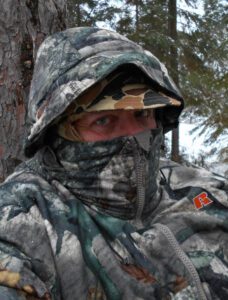
Bob Patterson in field testing mode.
Happy hunting!
Robert A. Patterson is on my short list of people to go into the wilderness with. Bob was my roommate at Iowa State University way back when, and is a skilled outdoorsman, an avid deer hunter and fisherman. For more than two decades, he did an annual solo, two-week canoe trip in the Boundary Waters Canoe Area Wilderness. We have been on many, many outdoor excursions together, and are currently working on setting up a hog hunt.
His career choices make Bob a great source for gear reviews. A retired firefighter and first responder, Bob was also an EMT, and the job required he be outdoors in all sorts of nasty, cold Minnesota weather. (Bob knows his foul weather gear and is my go-to guy for questions about winter camping, rain gear or other survival clothing!)
Bob is also a Taekwondo black belt, retired member of the National Ski Patrol, and a certified rope rescue instructor.
Please click here to check out and subscribe to the SurvivalCommonSense.com YouTube channel – thanks!
For more Bob Patterson posts, check these links out:
Gore-tex boot liners and how I use them
HOW TO PITCH A TARP TO SURVIVE IN HEAVY WINDS
BARK RIVER BRAVO 2 REVIEW | PERFECT DO-IT-ALL, SIZED-RIGHT KNIFE FOR THE WILDERNESS?
ANOTHER LOOK AT THE BARK RIVER TRAKKER COMPANION
CHOOSE THE BEST FOUR-SEASON BACKPACKING TENT FOR WINTER CAMPING

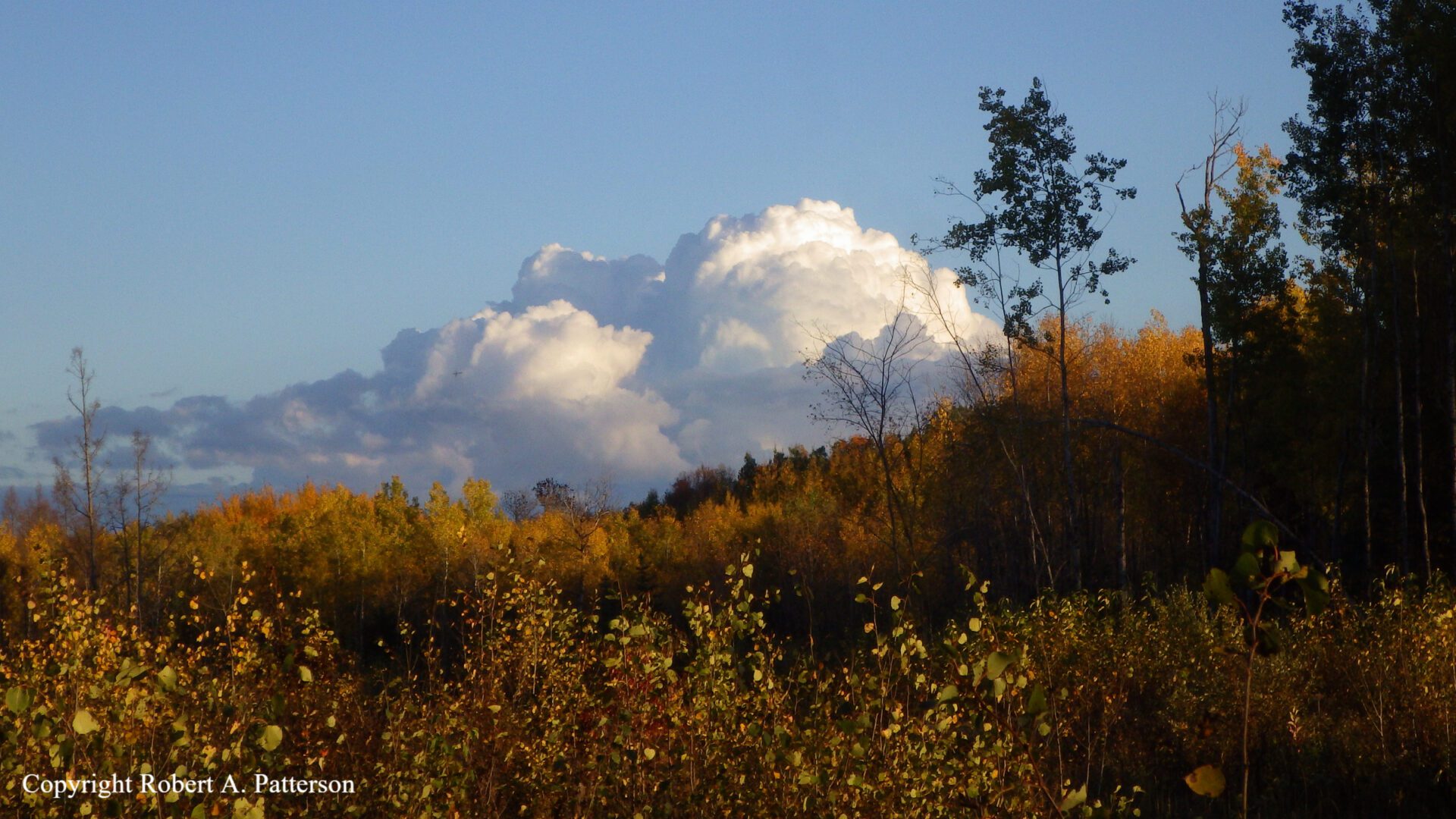
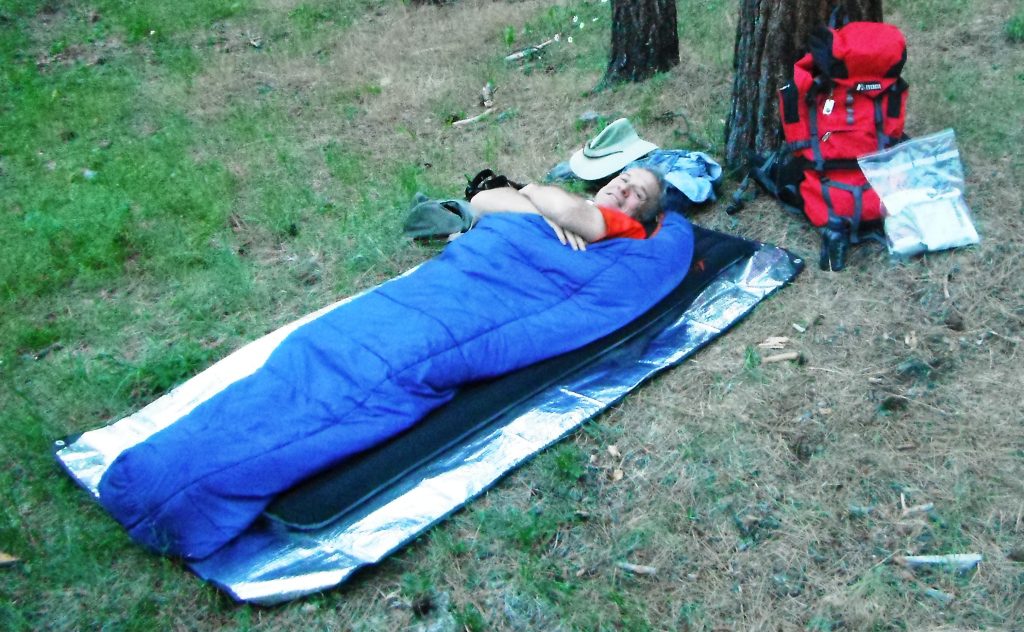
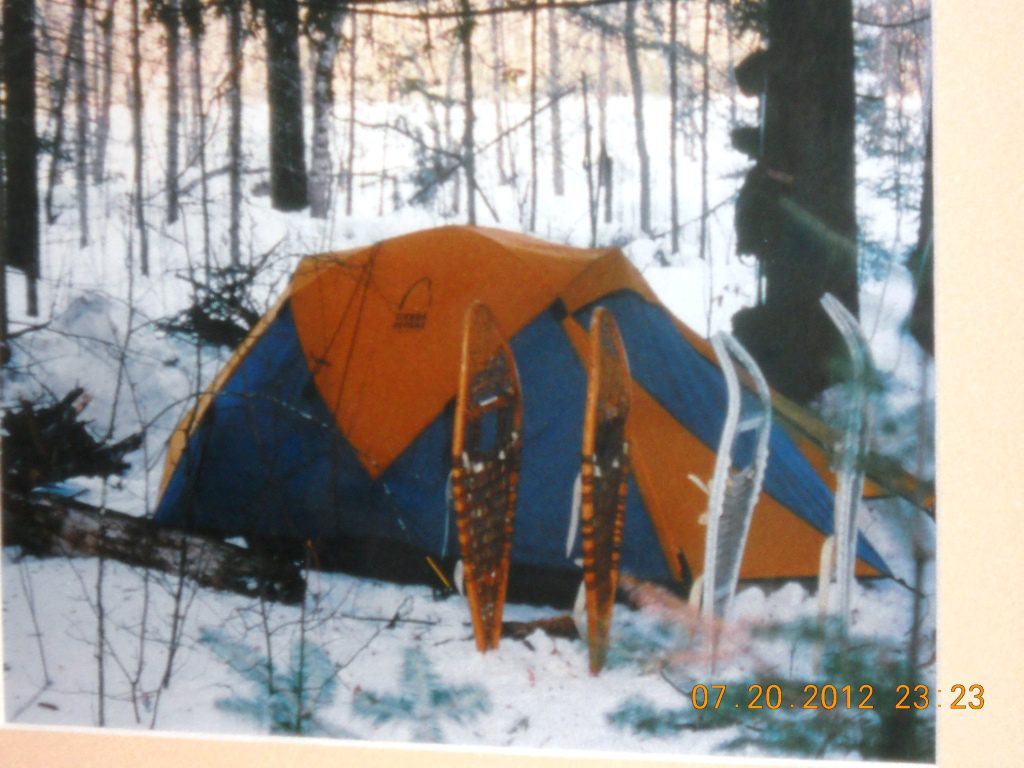
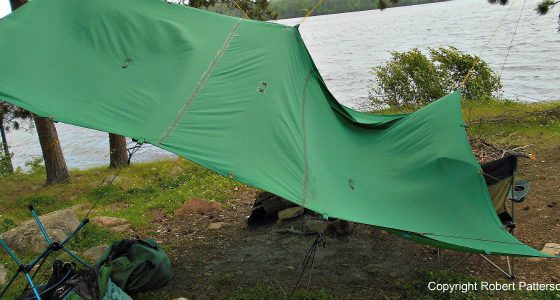
Leave a Reply